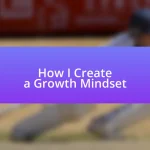Key takeaways:
- Player development focuses on both technical skills and mental resilience, emphasizing personalized feedback and a growth-oriented mindset.
- Building strong relationships between coaches and players fosters trust and enhances communication, leading to improved teamwork.
- Incorporating fun and engaging activities into training can increase motivation and enjoyment, improving overall performance.
- Effective measurement of player improvement involves both quantitative metrics and qualitative anecdotes, highlighting the importance of emotional growth alongside skill enhancement.
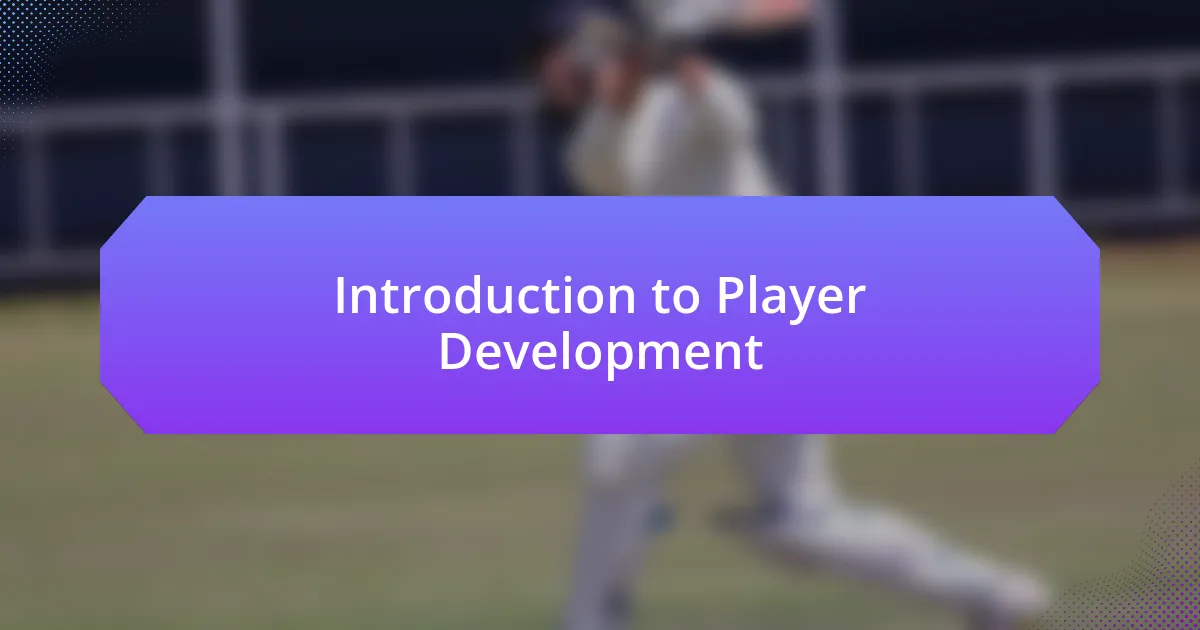
Introduction to Player Development
Player development is a journey that goes beyond just honing skills; it involves nurturing an athlete’s mindset, resilience, and passion for the game. I remember my early days on the field, filled with both excitement and trepidation. Have you ever felt that rush of adrenaline before a big game? It’s in those moments of uncertainty that true growth often occurs.
As I progressed through various levels of competition, the focus on player development became increasingly clear. Coaches didn’t just emphasize winning; they focused on helping us understand our strengths and weaknesses. For example, I’ll never forget one coach who took the time to sit down with me after a tough match, helping me dissect what went wrong while celebrating the small victories. This personalized approach made all the difference and ignited my passion for continuous improvement.
In today’s competitive landscape, effective player development incorporates both physical training and mental fortitude. One of the pivotal moments in my own development occurred when I was taught the importance of visualization techniques. I found that imagining successful plays not only boosted my confidence but also enhanced my performance on the field. Isn’t it fascinating how the mind plays such a critical role in our athletic journeys?
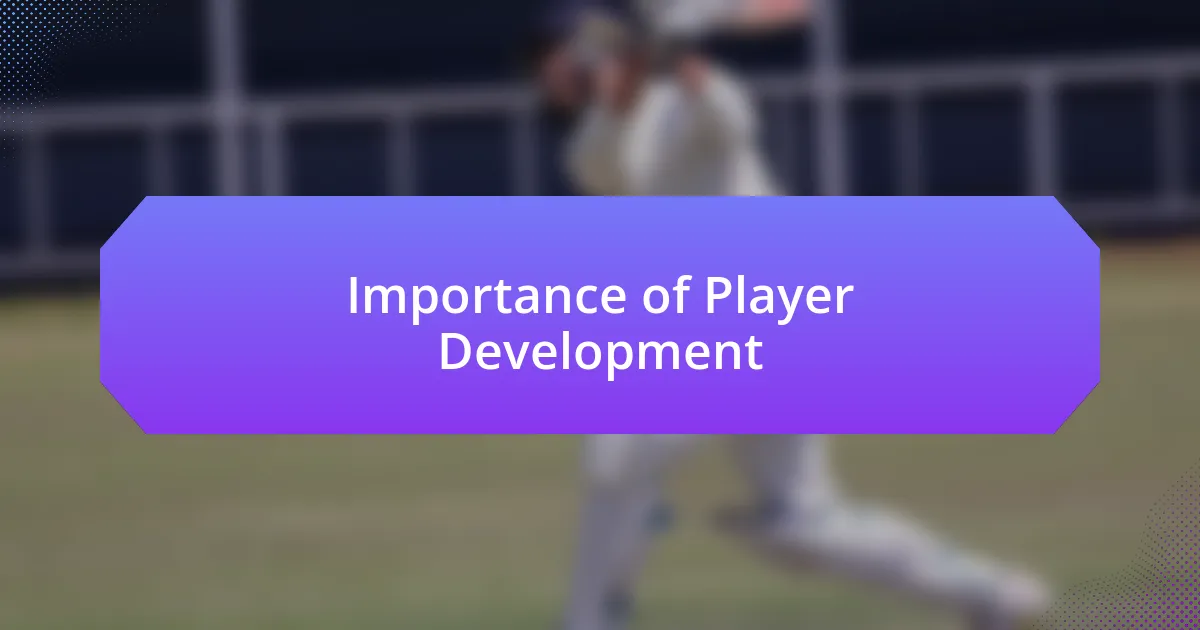
Importance of Player Development
The significance of player development cannot be overstated. From my perspective, it lays a foundation for athletes to not only improve their technical skills but also build essential life skills like teamwork and discipline. I recall a moment during an offseason training camp, where I bonded closely with teammates; those shared experiences shaped our collective drive and understanding of the game. How many times have you leaned on your teammates for support in tough moments? That camaraderie is part of what makes player development so vital.
Additionally, tailored feedback plays a crucial role in player growth. I was fortunate to have coaches who understood our unique learning styles. For instance, one coach would record our practices and review the footage with us, highlighting areas for improvement. This not only helped me see my growth over time but also motivated me to push beyond my perceived limits. The right guidance can transform a player’s approach to challenges, turning setbacks into opportunities for growth.
Lastly, the long-term vision that player development fosters cannot be ignored. I’ve seen countless athletes lose their way when they focus solely on immediate results. However, those who embrace a development-oriented mindset often thrive. During high-stakes tournaments, I learned that having a growth mentality allowed me to appreciate every mistake as a stepping stone. It’s all about playing the long game, isn’t it?
| Aspect | Player Development Importance |
|---|---|
| Skill Improvement | Enhances technical abilities and understanding of the game |
| Life Skills | Fosters teamwork, discipline, and resilience |
| Personalized Feedback | Guides transitional growth through tailored coaching |
| Long-Term Vision | Encourages a focus on growth and learning over immediate success |

My Training Philosophy
Training philosophy is deeply personal and crafted from experiences both on and off the field. I believe in balancing structured training with moments of creativity. There were days when we’d step onto the field, not just to follow a drill but to experiment with new moves I had been thinking about. Those moments, unscripted as they were, ignited my passion and fostered a joy in the game that structured practices sometimes lacked.
My philosophy can be summarized in the following principles:
- Adaptability: Training should evolve based on the athlete’s needs and progress.
- Empowerment: Athletes should feel ownership over their development, encouraging initiative.
- Mindset: Fostering a positive, growth-oriented mindset helps players embrace challenges.
- Connection: Building strong relationships between coaches and players enhances trust and communication.
- Fun: Incorporating enjoyment into training creates an environment where players are eager to learn.
Each principle reflects not just what I believe but also what shaped my journey as an athlete. I fondly remember how a friendly competition during practice brought out the best in everyone—it wasn’t just about winning, but about pushing each other to shine. That’s the essence of my training philosophy; it’s about growth, collaboration, and celebration.
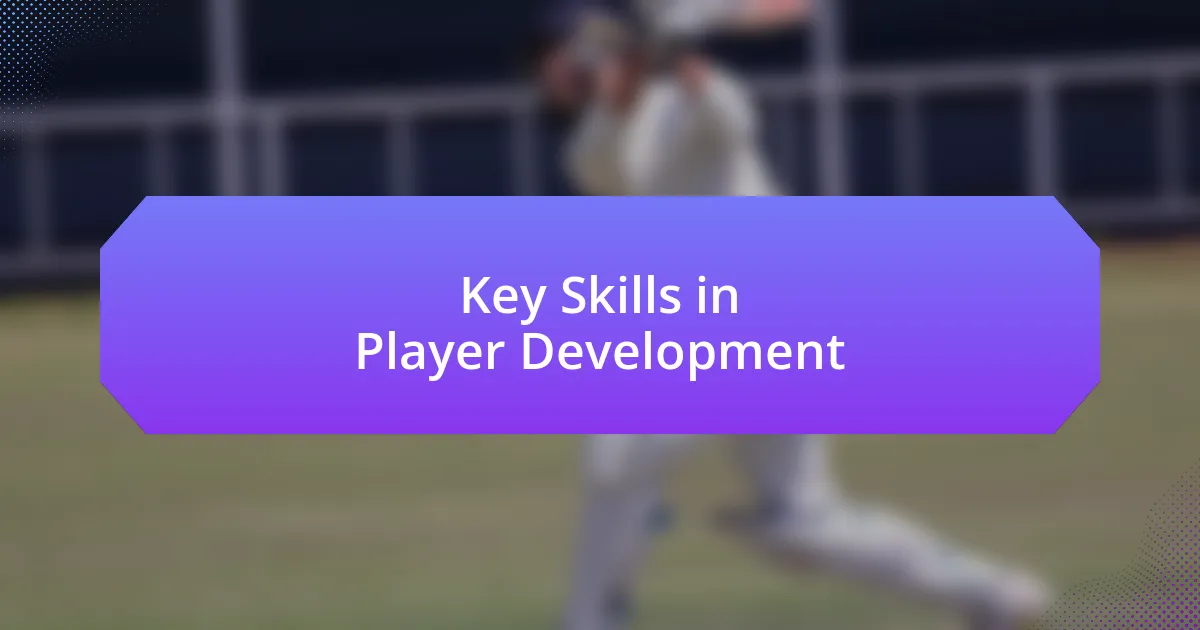
Key Skills in Player Development
When I reflect on the key skills in player development, adaptability stands out as a crucial element. I remember a time during a playoff season when one of our star players was struggling with performance anxiety. Instead of pushing the same training routine, I decided to incorporate mindfulness exercises that helped him refocus and regain his confidence. This shift not only improved his performance but also reinforced the idea that development isn’t one-size-fits-all; it requires a responsive approach.
Another skill I’ve found integral is the ability to foster a growth-oriented mindset. There was a moment during a particularly intense practice when a young player made a series of mistakes. Instead of letting him dwell on them, I shared my own experience of facing failure early in my career and how each setback taught me valuable lessons. That dialogue not only lifted his spirits but also reminded the entire team that failure paves the way for growth.
Equally important is the skill of building strong relationships. I recall how, in one of my teams, the atmosphere changed dramatically when I took the time to connect with each player individually. We would share personal stories, laugh, and sometimes even cry. This openness fostered an environment of trust, which ultimately led to enhanced communication on and off the field. It’s incredible how investing in personal relationships can lead to improved teamwork and a sense of belonging within the group. Have you ever witnessed how connection transforms a team’s dynamics? It’s truly powerful.
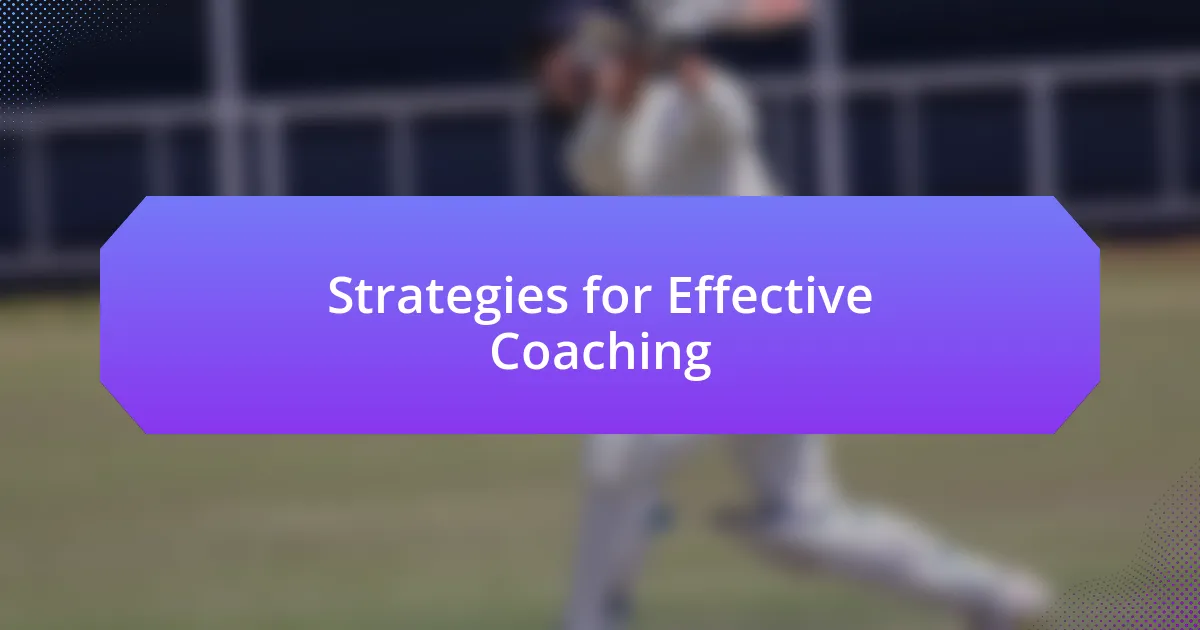
Strategies for Effective Coaching
When it comes to effective coaching, I’ve always believed in the power of setting clear, achievable goals with my players. One season, I implemented weekly check-ins where each athlete would outline personal targets. It was fascinating to see the ownership they took over their development, as they began to hold each other accountable. Have you noticed how clarity can ignite motivation? It certainly works wonders.
Another tactic that has proven invaluable is incorporating feedback loops into training sessions. After a challenging drill, I initiated a practice of open dialogue where players could share their thoughts on what worked and what didn’t. I was surprised by how candid they were, and this two-way communication not only improved drills but also reinforced a team-centric mindset. How often do you provide your athletes a platform to express their views?
Lastly, making learning fun has been a cornerstone of my coaching strategy. During winter training, we’d often turn rigorous drills into engaging competitions. I vividly recall a day when we integrated games into our exercises, which not only generated laughter but also fostered camaraderie. The thrill of competition, combined with skill-building, transformed the way players approached practice. Isn’t it remarkable how enjoyment can enhance performance?
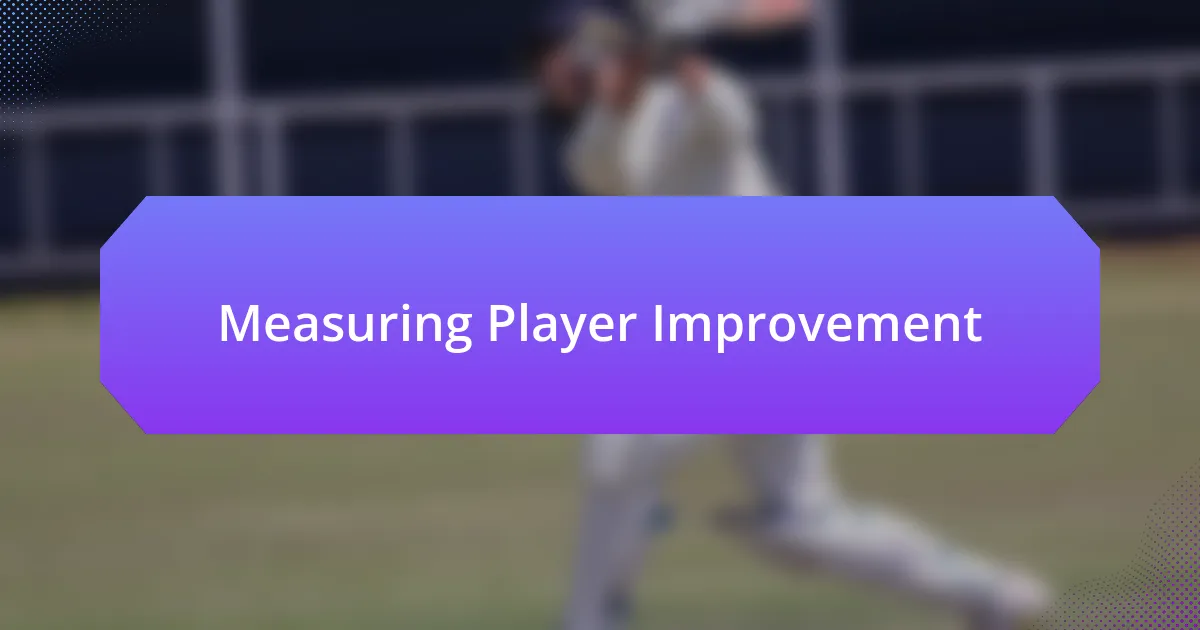
Measuring Player Improvement
It’s essential to use various metrics to quantify player improvement, and I’ve found that tracking progress over time makes all the difference. For instance, I once recorded performance stats at the beginning and end of each month, and seeing those tangible numbers helped my players visualize their growth. Doesn’t it feel great to have clear evidence that all those extra hours of practice are paying off?
One of my favorite methods is to conduct skill assessments during practice. I remember a specific instance where I set up a baseline test for shooting accuracy. After a month of focused training, the same drill revealed a noticeable increase in their percentage. Watching their faces light up with pride as they saw their improvement was incredibly rewarding. Have you ever seen that spark of realization in your players?
Beyond numbers, anecdotal evidence plays a crucial role in understanding player development. A player of mine once shared how his confidence soared after successfully applying a new technique in a game. That emotional shift became a pivotal moment for him—and for me as a coach. How often do we overlook the narratives behind the statistics that can tell us so much more about a player’s journey?

Insights and Lessons Learned
In my journey with player development, I’ve learned that communication can be just as important as technical skills. Early on, I would often overlook the conversations with players before and after practice. These discussions helped me understand their mindset and what truly motivated them. Have you ever realized that sometimes, a simple chat can illuminate what a player needs to improve?
One particularly impactful experience came when I introduced feedback sessions after games. One player opened up about how they felt under pressure in crucial moments. By acknowledging that vulnerability, we worked together to develop mental strategies for future challenges. This connection not only enhanced their performance but also deepened our trust. Isn’t it fascinating how understanding emotions can pave the way for skill enhancement?
Another lesson I took to heart is the value of patience. During one season, I pushed for rapid improvements, only to find my players overwhelmed and frustrated. I quickly adapted my approach, allowing for more gradual growth. This taught me that development isn’t just about drills and stats; it’s about nurturing belief in the process. Have you experienced a moment where slowing down led to monumental progress?













